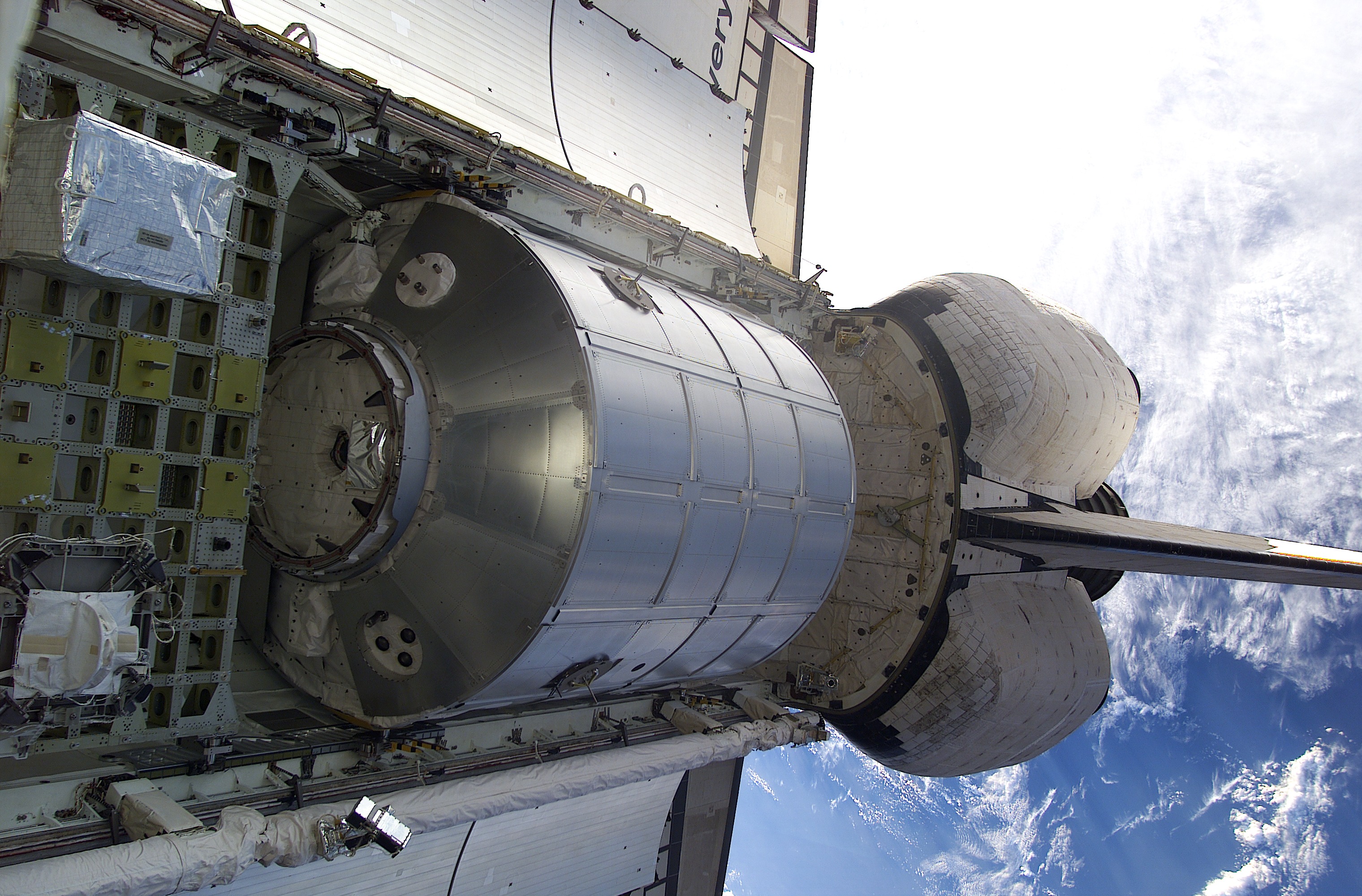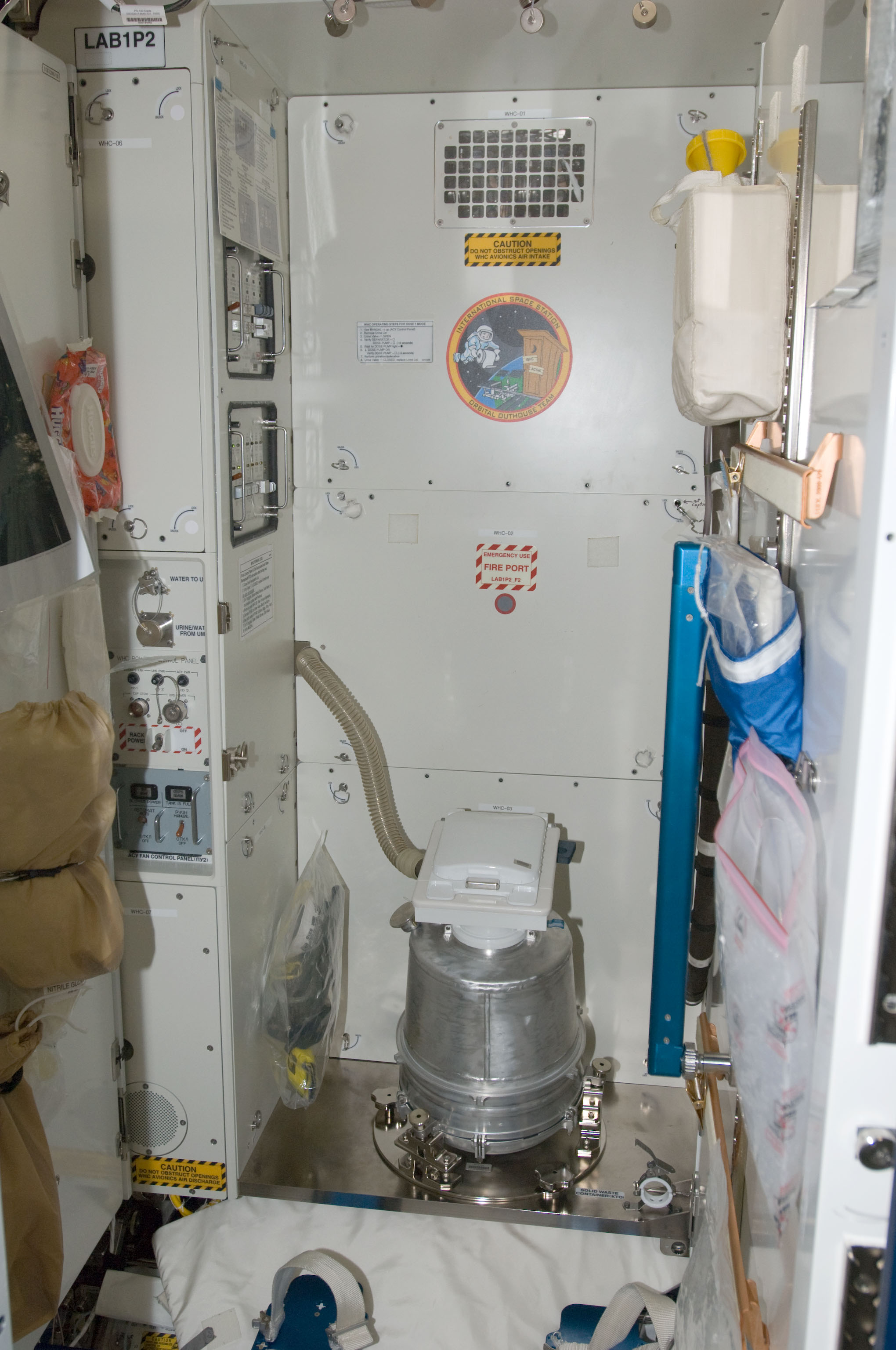|
Multi-Purpose Logistics Module
A Multi-Purpose Logistics Module (MPLM) is a large pressurized container that was used on Space Shuttle missions to transfer cargo to and from the International Space Station (ISS). Two MPLMs made a dozen trips in the Shuttle cargo bay and initially berthed to the ''Unity (ISS module), Unity'' and later the ''Harmony (ISS module), Harmony'' module on the ISS. Once attached, supplies were offloaded, and finished experiments and waste were reloaded. The MPLM was then transferred back into the Shuttle’s cargo bay for return to Earth. Three modules were built by Alenia Aeronautica for the Italian Space Agency (ASI). They were named ''Leonardo (ISS module), Leonardo'', Raffaello MPLM, ''Raffaello'', and ''Donatello''. The ''Leonardo'' module was modified in 2010 to turn it into the Leonardo (ISS module), Permanent Multipurpose Module (PMM) and was permanently attached to the ISS during the STS-133 mission in March 2011. In July 2011, the ''Raffaello'' module was the primary payload ... [...More Info...] [...Related Items...] OR: [Wikipedia] [Google] [Baidu] |
Raphael
Raffaello Sanzio da Urbino (; March 28 or April 6, 1483April 6, 1520), now generally known in English as Raphael ( , ), was an Italian painter and architect of the High Renaissance. List of paintings by Raphael, His work is admired for its clarity of form, ease of composition, and visual achievement of the Platonism in the Renaissance, Neoplatonic ideal of human grandeur. Together with Leonardo da Vinci and Michelangelo, he forms the traditional trinity of great masters of that period. His father Giovanni Santi was court painter to the ruler of the small but highly cultured city of Urbino. He died when Raphael was eleven, and Raphael seems to have played a role in managing the family workshop from this point. He probably trained in the workshop of Pietro Perugino, and was described as a fully trained "master" by 1500. He worked in or for several cities in north Italy until in 1508 he moved to Rome at the invitation of Pope Julius II, to work on the Apostolic Palace at Vatican ... [...More Info...] [...Related Items...] OR: [Wikipedia] [Google] [Baidu] |
Canadarm-2
The Mobile Servicing System (MSS) is a robotic system on board the International Space Station (ISS). Launched to the ISS in 2001, it plays a key role in station assembly and maintenance; it moves equipment and supplies around the station, supports astronauts working in space, services instruments and other payloads attached to the ISS, and is used for external maintenance. Astronauts receive specialized training to perform these functions with the various systems of the MSS. The MSS is composed of three components: * the Space Station Remote Manipulator System (SSRMS), known as Canadarm2. * the Mobile Remote Servicer Base System (MBS). * the Special Purpose Dexterous Manipulator (SPDM, also known as "Dextre" or "Canada hand"). The system can move along rails on the Integrated Truss Structure on top of the US-provided Mobile Transporter cart, which hosts the MRS Base System. The system's control software was written in the Ada 95 programming language. The MSS was designed an ... [...More Info...] [...Related Items...] OR: [Wikipedia] [Google] [Baidu] |
Grapple Fixture
Grapple fixtures are used on spacecraft or other objects to provide a secure connection for a Articulated robot, robotic arm. North America The fixtures allowed the Space Shuttle, Space Shuttle's Canadarm (also known as the Shuttle Remote Manipulator System, or SRMS) to safely grapple large objects (e.g. ISS components, or satellites e.g. Hubble Space Telescope, HST). They currently do the same for the International Space Station's Mobile Servicing System#Canadarm2, Space Station Remote Manipulator System (SSRMS) (also known as Canadarm2) and the Kibo (ISS module)#Remote Manipulator System, Japanese Experiment Module Remote Manipulator System (JEMRMS). The grapple fixtures are flat in appearance, with a central grapple pin topped with a sphere which the snares in the end of the arms latch on to. They use three "ramps" that help guide the robotic arm correctly onto the grapple fixture. Development The North American grapple fixture was developed at Spar Aerospace in the 1970s. It ... [...More Info...] [...Related Items...] OR: [Wikipedia] [Google] [Baidu] |
Common Berthing Mechanism
The Common Mechanism (CBM) connects habitable elements in the US Orbital Segment (USOS) of the International Space Station (ISS). The CBM has two distinct sides that, once mated, form a cylindrical wiktionary:vestibule, vestibule between modules. The vestibule is about long and across. At least one end of the vestibule is often limited in diameter by a smaller wiktionary:bulkhead, bulkhead penetration. The elements are maneuvered to the berthing-ready position by a . Latches and bolts on the active CBM (ACBM) side pull wiktionary:fitting#Nouns, fittings and nut plate, floating nuts on the passive CBM (PCBM) side to align and join the two. After the vestibule is pressurized, crew members clear a passage between modules by removing some CBM components. Utility connectors are installed between facing bulkheads, with a closeout panel to cover them. The resulting tunnel can be used as a loading dock, loading bay, admitting large payloads from visiting cargo spacecraft that would no ... [...More Info...] [...Related Items...] OR: [Wikipedia] [Google] [Baidu] |
Boeing
The Boeing Company, or simply Boeing (), is an American multinational corporation that designs, manufactures, and sells airplanes, rotorcraft, rockets, satellites, and missiles worldwide. The company also provides leasing and product support services. Boeing is among the largest global aerospace manufacturers; it is the fourth-largest defense contractor in the world based on 2022 revenue and is the largest exporter in the United States by dollar value. Boeing was founded by William E. Boeing in Seattle, Washington, on July 15, 1916. The present corporation is the result of the merger of Boeing with McDonnell Douglas on August 1, 1997. As of 2023, the Boeing Company's corporate headquarters is located in the Crystal City neighborhood of Arlington County, Virginia. The company is organized into three primary divisions: Boeing Commercial Airplanes (BCA), Boeing Defense, Space & Security (BDS), and Boeing Global Services (BGS). In 2021, Boeing recorded $62.3billion in sales. ... [...More Info...] [...Related Items...] OR: [Wikipedia] [Google] [Baidu] |
Space Station Freedom
Space Station ''Freedom'' was a NASA-led multi-national project proposed in the 1980s to construct a permanently crewed space station in low Earth orbit. Despite initial approval by President Ronald Reagan and a public announcement in the 1984 State of the Union Address, the ambitious project faced significant budget cuts and delays. Ultimately, a scaled-down version of Freedom evolved into the US Orbital Segment (USOS) of the International Space Station (ISS). By the time the project was canceled, NASA had already invested approximately $11 billion into Space Station ''Freedom'', however some of that work would benefit the ISS. As originally envisioned, the station would have been collaborative project involving four participating space agencies: NASA (United States), National Space Development Agency of Japan, NASDA (Japan), European Space Agency, ESA (Europe), and Canadian Space Agency, CSA (Canada). Those same partners would go on to build the USOS, but the International Sp ... [...More Info...] [...Related Items...] OR: [Wikipedia] [Google] [Baidu] |
Cygnus Spacecraft
Cygnus is an Expendable launch system, expendable American Uncrewed spacecraft, automated cargo spacecraft designed for International Space Station (ISS) resupply missions. It was initially developed by Orbital Sciences Corporation with financial support from NASA under the Commercial Orbital Transportation Services (COTS) program. To create Cygnus, Orbital paired a pressurized cargo module, largely based on the Multi-Purpose Logistics Module, built by Thales Alenia Space and previously used by the Space Shuttle for ISS resupply, with a service module based on Orbital's GEOStar, a satellite bus. After a successful demonstration flight in 2013, Orbital was chosen to receive a Commercial Resupply Services (CRS) contract. A larger Enhanced Cygnus was introduced in 2015. Orbital Sciences merged into Orbital ATK in 2015; Northrop Grumman purchased Orbital ATK in 2018 and has continued to operate Cygnus missions. A further enlarged Mission B Cygnus is expected to be introduced in 2025. ... [...More Info...] [...Related Items...] OR: [Wikipedia] [Google] [Baidu] |
Tranquility (ISS Module)
''Tranquility'', also known as Node 3, is a module of the International Space Station (ISS). It contains environmental control systems, life support systems, a toilet, exercise equipment, and an observation Cupola (ISS module), cupola. The European Space Agency (ESA) and the Italian Space Agency (ASI) had ''Tranquility'' manufactured by Thales Alenia Space. A ceremony on 20 November 2009 transferred ownership of the module to NASA. On 8 February 2010, NASA launched the module on the Space Shuttle's STS-130 mission. Design and manufacturing ''Tranquility'' was built within the ESA-NASA ISS bartering system. ESA committed to build and fund both Harmony (ISS module), ''Harmony'' and ''Tranquility'' as well as the Automated Transfer Vehicle, ATV in order to use NASA ISS facilities, fly astronauts on the Shuttle and for other ISS services. ESA teamed up with the Italian Space Agency (ASI) to Manufacturing of the International Space Station, manufacture both ''Harmony'' and ''T ... [...More Info...] [...Related Items...] OR: [Wikipedia] [Google] [Baidu] |
Columbus (ISS Module)
''Columbus'' is a science laboratory that is part of the International Space Station (ISS) and is the largest single contribution to the ISS made by the European Space Agency (ESA). Like the ''Harmony (ISS module), Harmony'' and ''Tranquility (ISS module), Tranquility'' modules, the ''Columbus'' laboratory was constructed in Turin, Italy by Thales Alenia Space. The functional equipment and software of the lab was designed by Airbus, EADS in Bremen, Germany. It was also integrated in Bremen before being flown to the Kennedy Space Center (KSC) in Florida in an Airbus Beluga. It was launched aboard on 7 February 2008, on flight STS-122. It is designed for ten years of operation. The module is controlled by the Columbus Control Centre, located at the German Space Operations Center, part of the German Aerospace Center in Oberpfaffenhofen near Munich, Germany. The European Space Agency has spent Euro, €1.4 billion (about United States dollar, US$2 billion) on building ''Columbu ... [...More Info...] [...Related Items...] OR: [Wikipedia] [Google] [Baidu] |








